Join the conference exhibitors as they discuss innovations and best practices in the field. Technology Showcase presentations are educational (not commercial) and feature case studies which may include use of exhibitor products and services.
Professional Development Units (PDUs) are available to those who attend these sessions. All full conference registrants are welcome to join during the scheduled time.
Monday, October 27
Time: 8-8:35am
Location: A301
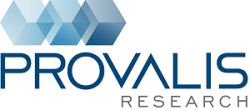
Beyond the Hype: Rethinking Text Analysis in the Age of Generative AI
Presented by: Normand Péladeau
In this presentation, we will explore latest advancements in generative AI and large language models (LLMs) and see their contribution as well as limitations for text analytics applications. While the excitement surrounding such new technologies is undeniable, older techniques still provide significant value and may even outperform newer methods in certain contexts. By critically examining the strengths and limitations of both established and cutting-edge approaches, we want to offer a balanced, realistic perspective on the role of recent developments in NLP and AI.
Time: 8:40-9:15am
Location: A301
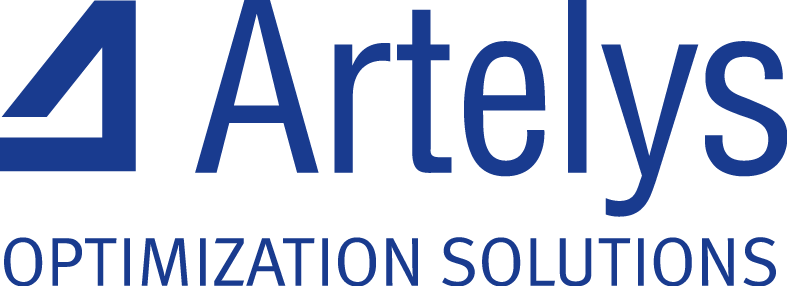
Model and Solve Nonlinear Optimization Problems with
Artelys Knitro
Presented by: Richard Waltz
Artelys Knitro is the leading solver focused on large-scale, nonlinear (potentially non-convex), optimization problems. Knitro offers both interior-point and active-set algorithms for continuous models, as well as tools for handling problems with integer variables and other discrete structures. This tutorial will introduce the key features of Knitro, and demonstrate how to use Knitro to model and solve optimization problems in various environments. The talk will showcase several instances of nonlinear problems, typically addressed through linear relaxation, yet warranting a direct approach. It will delve into the methodologies and tools employed to tackle these challenges. This tutorial aims at an audience familiar with the basics of mathematical optimization, focusing on practical examples.
Time: 11-11:35am
Location: A301

Building Trust in Optimization
Presented by: Caroline Weinberg
In this session we will explore some of Gurobi’s advanced features through the lens of solution explainability, including solution pools, infeasibility analysis, and multi-scenario analysis. Explainability in practice requires both technical skills and successful communication with stakeholders who don’t know how Gurobi works (and that’s ok!). We show how these tools are not just for modeling – they can help users interpret optimization results and build trust their solutions.
Time: 11:40am-12:15pm
Location: A301

Using an online factory management simulation to teach Operations Management
Presented by: Sam Wood
Littlefield for Operations is a competitive online simulation of either a factory or a medical laboratory that has been used by more than half a million students in 500+ universities in 60+ countries over the past 26 years. In this session, we will discuss how professors use the newest version of Littlefield for Operations (2.0) to effectively teach foundational operations management topics such as process analysis, capacity planning and inventory control to students at various levels in various course formats.
Time: 1:15–1:50pm
Location: A301

Reducing Time-to-Value with FICO Xpress optimization suite
and gen ai
Presented by: Carlos Zetina and Rusty Burlingame
Time to Value measures how long it takes for technology projects to begin providing business value. Three critical milestones to achieve this are model creation, validation, and deployment. In this showcase, we’ll show how FICO Xpress Optimization Suite shortens Time to Value and supercharges Return on Investment (ROI) by providing a unified platform for development, validation, and deployment. We’ll show how FICO’s suite of products and Gen AI come together to turbocharge building and adoption of enterprise optimization applications deployable on any tech stack, be it server-less or via virtual machines, hosted on any cloud provider or on-premises infrastructure.
Hear from Rusty Burlingame from Southwest Airlines, on how Southwest is using Xpress to improve customer experience, enhance employee engagement, and streamline operations to maximize revenue and support growth.
Time: 1:55-2:30pm
Location: A301

Cracking the Vault with Gurobot: Generative AI and the Future of Mathematical Modeling
Presented by: Cara Touretzky
Discover how Gurobi is exploring the use of generative AI to support and streamline the modeling of mathematical optimization problems. Through the lens of a hands-on museum heist challenge, we’ll walk through examples of AI-assisted modeling across varying levels of complexity. We’ll highlight current capabilities, acknowledge present limitations, and offer a glimpse into where we’re headed next as we expand the role of AI in the modeling workflow.
Time: 2:45-3:20pm
Location: A301

DecisionOps in the Analytics Process: Collaboration, observability, testing, ecosystem, and workflows
Presented by: Carolyn Mooney and Tiffany Bogich
Optimization is founded upon the promise of efficiency and improving solutions. In today’s analytics environment, the leading data science and optimization teams will be defined by how they apply DecisionOps practices to test, deploy, and operate these solutions alongside software and business stakeholders.
Join this session to learn basic concepts, real-world applications, and how to get started with DecisionOps in Nextmv, a platform for accelerating decision model development. This session is relevant to anyone working with tools such as: OR-Tools, Pyomo, HiGHS, VROOM, Gurobi, AMPL, FICO Xpress, Hexaly, Jupyter Notebooks, Statsmodels, Prophet, scikit-learn, Databricks, Snowflake, and more.
Time: 3:25-4pm
Location: A301
Computing Dual Bounds of Set-based Models Using Column Generation and Column Elimination in Hexaly
Presented by: Julien Darlay
Hexaly is a model-and-run solver that integrates heuristics and exact methods. A set-based modeling formalism was introduced to simplify the modeling of some combinatorial problems, like routing or packing problems. For instance, in a routing problem, list variables can be used to model the sequence of visits made by each truck. These decision variables are well suited for a heuristic search but are much more challenging to integrate into a mathematical programming approach to compute lower bounds. A direct MILP reformulation introduces a quadratic number of binary decisions with several big M constraints, leading to poor scalability and bounds. Hexaly automatically detects such structures in a user model and reformulates them in an extended MILP model to compute lower bounds parallel to a heuristic search. This model is solved efficiently using the literature’s state-of-the-art branch-and-cut-and-price techniques and column elimination algorithms. This talk will present the general approach, the algorithms used for the resolution, and some benchmarks on the classical vehicle routing and packing problems.
Time: 4:15-4:50pm
Location: A301

At the intersection of AI, Data, and Advanced Materials
and Manufacturing
Presented by: Changchun (Chad) Zeng
This presentation overviews the diverse research in the Department of Industrial and Manufacturing Engineering (IME). We have an outstanding group of faculty members working in the areas vital to the national interest and to the betterment of society, i.e., advanced materials and manufacturing, nanomaterials and nanotechnology, smart materials, data science and analytics, artificial intelligence, machine learning and deep learning, systems engineering, transportation systems and supply chain logistics. Our faculty members are involved in these exciting areas on projects sponsored by prestigious funding agencies, i.e., NSF, NIH, DOE, DOD, NASA, AFRL, ONR, to name a few.
Time: 4:55-5:30pm
Location: A301

Optimization Solution Development and Deployment: A Framework for Success
Presented by: Irv Lustig
For over 44 years, Princeton Consultants has developed and deployed numerous applications that leverage optimization to make better decisions for our clients. We have developed a set of best practices over that time that are also reflected in the recently published INFORMS Analytics Framework (IAF), for which Irv was a key contributor. The IAF provides a roadmap for successful analytics projects, including optimization, and contains specific tasks related to risk management. Irv will describe both the IAF and the Princeton 20, a set of 10 environmental and 10 technical risks to be evaluated at the commencement of any project. Understanding these risks in the context of the framework leads to best practices that improve the chances of success for your next optimization project.
Tuesday, October 28
Time: 8-8:35am
Location: A302
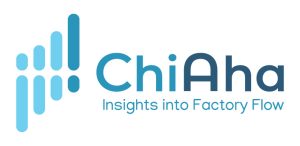
Democratizing Digital Twins: From Real-Time Operations to Strategic Planning
Presented by: Andrew Siprelle
Digital twins serve different problem domains requiring different technical approaches. Traditional 3D kinematic simulation excels at spatial problems. Strategic capital investment decisions require different capabilities: rapid scenario analysis, statistical validation, and system interdependency revelation. This session presents a case study demonstrating time-compressed discrete event simulation methodology delivering strategic intelligence through rapid construction and statistical parameterization from historian data. The case reveals a critical insight: two equipment problems with similar historical downtime losses deliver 1.3x versus 5x actual gains when fixed. This gap illustrates why traditional loss analysis misleads prioritization decisions. The methodology enables Fortune 500-standard predictive modeling to become accessible.
Time: 8-8:35am
Location: A301

Advancing Decision Intelligence with AI-Assisted Simulation: Case Studies from the Strategic Decision Lab
Presented by: Alton Alexander
See how systems thinking and AI-assisted simulation can accelerate decision-making in education and practice. Through case studies in workforce scheduling, healthcare capacity, supply chains, and training pipelines, we show how the Strategic Decision Lab enables participants to design, calibrate, and compare scenarios rapidly. Attendees will see how AI assistants support model building, scenario exploration, and insight generation while maintaining transparency and rigor. Participants will gain practical methods to integrate AI-assisted simulation into their teaching or professional practice, learning how to enrich curricula, engage learners, and apply collaborative systems thinking for real-world decision support.
Time: 8:40-9:15am
Location: A301

Reducing Time-to-Value with FICO Xpress Optimization Suite
and Gen AI
Presented by: Carlos Zetina and Rusty Burlingame
Time to Value measures how long it takes for technology projects to begin providing business value. Three critical milestones to achieve this are model creation, validation, and deployment.
In this talk, we’ll show how FICO Xpress Optimization Suite shortens Time to Value and supercharges Return on Investment (ROI) by providing a unified platform for development, validation, and deployment. We’ll show how FICO’s suite of products and Gen AI come
together to turbocharge building and adoption of enterprise optimization applications
deployable on any tech stack, be it serverless or via virtual machines, hosted on any cloud
provider or on-premises infrastructure.
Hear from Rusty Burlingame from Southwest Airlines, on how Southwest is using Xpress to improve customer experience, enhance employee engagement, and streamline operations to maximize revenue and support growth.
Time: 8:40-9:15am
Location: A302

An Introduction to Modeling with GAMSPy
Presented by: Adam Christensen and Steven Dirkse
Our showcase offers a hands-on introduction to GAMSPy. GAMSPy combines the high-performance GAMS execution system with the flexible Python language, creating a powerful mathematical optimization package. It acts as a bridge between the expressive Python language and the robust GAMS system, allowing you to effortlessly create complex mathematical models and applications.
Join us to explore GAMSPy’s fundamental functionalities through practical, interactive exercises. We’ll cover everything from defining sets, parameters, variables, and equations to solving models and retrieving results, all within a familiar Python environment. Beyond the basics, we’ll also provide a glimpse into more advanced features, demonstrating how GAMSPy can streamline complex modeling workflows and enhance your analytical capabilities.
Whether you’re a seasoned GAMS user looking to integrate with Python or a Python user curious about optimization, this workshop will equip you with essential skills needed to get started and demonstrate what is possible with GAMSPy.
Time: 11-11:35am
Location: A302

Solverminds’ Scalable Optimization-as-a-Service
Presented by: Mukund Sharma & Valentin Weber
Explore how Solverminds is redefining optimization through client-centric, co-developed solutions. This session highlights use cases across various scheduling challenges, demonstrating real-time decision support, fuel optimization, and scheduling efficiency across the maritime and transport industries.
Time: 11-11:35am
Location: A301

AI-Augmented Monte Carlo Simulation for Capital Investment Decisions in Innovation Project Portfolios
Presented by: Gustavo Vineuza
Capital investment decisions in innovation project portfolios are characterized by high uncertainty—ranging from technical feasibility and development timelines to market adoption and regulatory approval. Traditional deterministic models often fail to capture these uncertainties, leading to suboptimal capital allocation and increased risk exposure. This paper introduces a decision-support framework that combines Monte Carlo Simulation (MCS) with artificial intelligence (AI) to support more robust, data-informed investment strategies.
Monte Carlo Simulation is used to model uncertainty across financial and scheduling dimensions, producing probabilistic estimates for key metrics such as Net Present Value (NPV), Internal Rate of Return (IRR), and the likelihood of cost and time overruns. To improve simulation fidelity, AI techniques—particularly machine learning—are applied to historical and contextual project data. These models help refine input distributions, detect interdependencies between projects, and dynamically adjust assumptions in response to new evidence.
Beyond input calibration, AI is used to support optimization efforts by analyzing simulated outcomes and identifying portfolio strategies that maximize expected value under defined risk constraints. This enables decision-makers to explore trade-offs between risk and return, better allocate limited capital, and gain visibility into the impact of uncertainty drivers.
The proposed framework is demonstrated through a fictitious innovation portfolio composed of diverse early-stage projects. Results show improved transparency, better risk-adjusted returns, and actionable insights for capital allocation under uncertainty. The methodology is applicable to industries where innovation drives value, such as pharmaceuticals, energy, and technology.
Time: 11:40am-12:15pm
Location: A301

From Classroom to Industry: Modern Optimization with AMPL for Energy, Finance, Supply Chain, and Beyond
Presented by: Gleb Belov & Marcos Dominguez Velad
Optimization has never been more critical – or more accessible. This talk will show how students and applied researchers can bridge the gap between academic learning and real-world impact using AMPL in modern workflows. With free academic licenses now including commercial-grade access to leading linear solvers (Gurobi, CPLEX, Xpress, Mosek, COPT, HiGHS and more), AMPL offers an unmatched opportunity to develop and apply optimization skills directly in industry contexts.
We will explore how AMPL integrates seamlessly with the tools you already know – Python, R, Jupyter, Colab, VS Code, cloud platforms, and modern data pipelines – making it a “set it and forget it” system for building models that stay faithful to the real problems you’re solving. Attendees will see how AMPL powers large-scale, mission-critical applications in energy, finance, transportation, and supply chain, enabling companies to save costs, increase efficiency, and improve decision-making.
By combining intuitive modeling with cutting-edge solver technology, AMPL empowers students and researchers not just to learn optimization, but to contribute immediately to high-impact, industry-grade projects. Join us to discover how AMPL can position you, or your students, at the forefront of applied optimization.
Time: 11:40am-12:15pm
Location: A302

Solverminds’ Innovation in Progress: Optimization for
the Future
Presented by: Mohit Oberoi & Senthil Kumar
This session offers a forward-looking perspective on how Solverminds is developing next-generation optimization solutions. We’ll share key concepts, and early-stage innovations from ongoing projects, showcasing how our evolving approach can be applied across shipping, logistics, and broader transport ecosystems.
Time: 1:15–1:50pm
Location: A301

Bayesian Optimization for Efficient Decision-Making in
Complex Systems
Presented by: Ross Metusalem
Bayesian Optimization (BO) is a sequential learning method for efficiently optimizing noisy, black-box, or expensive-to-evaluate functions. Starting with a small set of observations, BO fits a flexible probabilistic model to the data and uses that model to determine the next observation(s) to collect. Iterating on this process, BO balances exploration of uncertain areas of the factor space with exploitation of potential optima to arrive at a globally optimal solution. This session will establish the foundational concepts underlying BO and present a case study of BO in action.
Time: 1:55-2:30pm
Location: A301

Optimization Education with Gurobi: A Social-Impact Case Study
Presented by: Lindsay Montanari & Everett Dutton
Gurobi, in partnership with ESUPS (Emergency Supply Pre-positioning Strategy), presents a new educational case study showcasing ESUPS’ utilization of optimization to stage relief inventory for humanitarian organizations. ESUPS unites NGOs, UN agencies, governments, and academics to improve logistics preparedness. The STOCKHOLM platform (STOCK of Humanitarian Organizations Logistics Mapping) applies data analytics techniques including optimization to determine where to pre-position supplies, minimize response times, and maximize coverage in crises where every hour matters.
This case study guides students and instructors through the full optimization pipeline: translating a complex humanitarian challenge into data, math, and models that support real-world decision making. Freely available, it gives learners hands-on experience with optimization in action, demonstrating how these methods can transform disaster response and deliver measurable social impact.
Time: 2:45-3:20pm
Location: A301

Unlocking Full Optimization Potential with COPT
Presented by: Tiancheng Zhang
In this presentation, the COPT team will demonstrates new capabilities and functionalities introduced in the latest COPT release, including features like the nonlinear solver and GPU acceleration. Additionally, the speaker will share COPT’s advanced features and performance through live notebook demos, showcasing real-world use cases such as drone trajectory optimization, portfolio optimization and beyond.
Time: 3:25-4pm
Location: A301
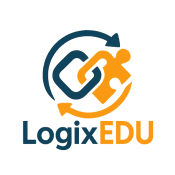
LogixEdu: A Game-Based, Experiential Approach to Supply
Chain Learning
Presented by: Ziping Wang
LogixEdu transforms supply chain education through an interactive game that simulates the full journey from materials to manufacturing, distribution, and sales. By combining experiential learning with game-based design, it simplifies complex dynamics while fostering transferable skills such as adaptability, initiative, and teamwork. This innovation bridges classroom theory with industry practice, preparing students and professionals for real-world supply chain challenges in an engaging and accessible way.
Time: 4:15-4:50pm
Location: A301
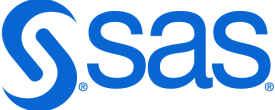
Building and Solving Optimization Models with SAS
Presented by: Rob Pratt
SAS offers extensive analytic capabilities, including machine learning, deep learning, natural language processing, statistical analysis, optimization, and simulation. SAS analytic functionality is also available through the open, cloud-enabled design of SAS® Viya®. You can program in SAS or in other languages – Python, Lua, Java, and R.
OPTMODEL from SAS provides a powerful and intuitive algebraic optimization modeling language and unified support for building and solving LP, MILP, QP, conic, NLP, constraint programming, network-oriented, and black-box models. This showcase will include an overview of the optimization capabilities and demonstrate recently added features.
Wednesday, October 29
Time: 9:30-10:05am
Location: A301

Data Strategy Professionals
Business Value of AI Governance Frameworks
Presented by: Nicole Janeway Bills
The talk addresses critical knowledge gaps that many data practitioners face in navigating AI Governance. The presentation will provide insights into the strengths and weaknesses of various AI Governance frameworks from organizations such as NIST and OECD and companies such as Microsoft, AWS, and Google. Moreover, we’ll discuss practical recommendations for the application of these frameworks to mitigate risk and enhance business value.
Time: 10:10-10:45am
Location: A301

VRP: when Research meets Reality
Presented by: Geoffrey De Smet
It’s one thing to solve a VRPTW (Vehicle Routing Problem with Time Windows). It’s another to put it in production for a fleet of 50,000 technicians and save hundreds of millions of dollars per year. It’s not just more constraints/objectives and more data.
In this session, we will talk about the business and technical challenges of transforming an academic VRP into a solution that works well in production.

